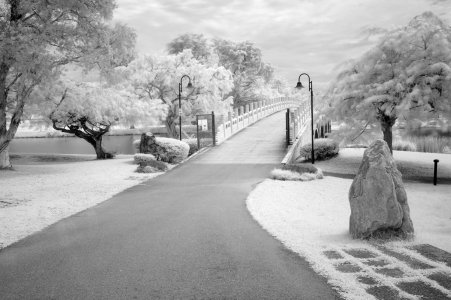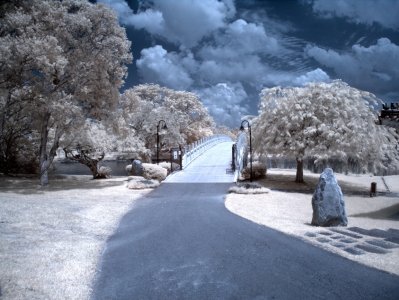Bill Watts
Well-Known Member
One of my first attempts at infrared work using a standard digital camera and an infrared filter. As the camera is fitted with an IR screen, exposure times are long and some cameras have stronger IR filtering than others.
The Bridge of Double Beauty connects The Chinese Gardens to the Japanese Gardens in Singapore. It is one of my favourite spots for photography in Singapore
Camera: Olympus OM-D E-M1.
Lens Olympus mZuiko 12-40mm f2.8
Exposure: f8, 20secs, ISO 200
Filter 720nm IR
Software: Affinity Photo

and revisited with a modified camera
Camera: Olympus E-PL1 (full spectrum)
Lens: Olympus mZuiko 14-42mm f3.5-5.6 EZ DSC
Exposure: f8, 1/800s, ISO 200
Filter 680nm IR
Software: Affinity Photo red blue channel reversal

The Bridge of Double Beauty connects The Chinese Gardens to the Japanese Gardens in Singapore. It is one of my favourite spots for photography in Singapore
Camera: Olympus OM-D E-M1.
Lens Olympus mZuiko 12-40mm f2.8
Exposure: f8, 20secs, ISO 200
Filter 720nm IR
Software: Affinity Photo

and revisited with a modified camera
Camera: Olympus E-PL1 (full spectrum)
Lens: Olympus mZuiko 14-42mm f3.5-5.6 EZ DSC
Exposure: f8, 1/800s, ISO 200
Filter 680nm IR
Software: Affinity Photo red blue channel reversal

